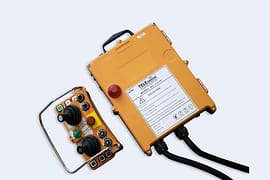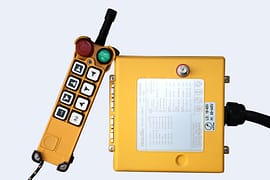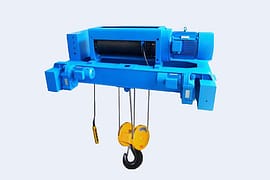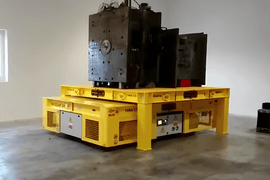- INDUSTRIES
-
EQUIPMENT
-
Overhead Cranes
-

Single Girder Overhead Crane
-

Double Girder Overhead Crane
-

Underslung Cranes
-

Workstation Overhead Cranes
-

Low Headroom Overhead Cranes
-

Grab Bucket Overhead Crane
-

Electromagnetic Overhead Cranes with Lifting Magnet
-

Electromagnetic Overhead Cranes with Magnet Beam
-

Manual Overhead Cranes
-

Double Trolley Overhead Cranes
-

LDP Single Girder Overhead Cranes
-
- Eot Cranes
- Gantry Cranes
- Jib Cranes
- FEM Standard Crane & Hoist
- Hoist & Winch Trolley
- Light Cranes
- Explosion Proof Cranes and Hoists
-
Special Cranes
-

35-65t Clamp Overhead Crane
-

Boat Hoists
-

Boat Jib Crane
-

Yacht Davit Crane
-

Rail Mounted Container Gantry Crane
-

Cleanroom Overhead Cranes
-

YZ Ladle Handling Cranes
-

LDY Metallurgical Single Girder Crane
-

Charging Cranes for Steel Production
-

Insulated Overhead Cranes
-

Gantry Crane for Subway and Metro Construction
-

Forging Crane
-

Quenching Overhead Crane
-

Baking Multifunctional Crane
-
- Port Cranes
- Electric Transfer Carts
-
Overhead Cranes
-
CRANE PARTS
- Crane Wheel Range
- Crane Spreader
- Crane Drives
-
Crane Electrical Equipment
-

Overload Limiter
-

Crane Cabin
-

Crane Power Supply System
-

Explosion Proof Crane Radio Remote Controls
-

Joystick Type Crane Radio Remote Controls
-

Pushbutton Type Crane Wireless Remote Controls
-

Single-pole Insulated Conductor Rails
-

Enclosed Conductor Rails
-

Seamless Conductor Rails
-

Copperhead Conductor Rails
-

Overhead Crane Cables
-
- Other Cranes Parts
\
- ABOUT US
- CONTACT US
The customer expects to receive a quality welded product on time. There are two ways for a supplier to achieve this – reactively or proactively. Reactively means not doing any preventative planning or analysis of what the true welding process capability is of each ship component welding system, be it man, machine or robot.
Proactive Intelligent Process Control
The proactive approach means one designs for manufacturing, employs capable processes and works with intelligent systems which again can be man, machine or robot based. The level of intelligent processing and pro-activeness is shown below.
- Level of intelligent automation Proactive/Reactive Level
- Manual welding Could be both
- Blind (no vision) machine or robot Reactive
- Automated pre-check of joint fit-up Proactive
- Real time seam tracking Proactive/Reactive
- Real time seam tracking with adaptive control Proactive-Adaptive Correction
- Laser vision system inspection Reactive but more accurate
- Weld Inspection Measurement System Proactive
- Closed loop control of process Proactive
- Repair based on automated weld inspection Proactive & Reactive
- Feed-forward ID of parts not to spec. from welding Proactive & Reactive
Let’s look at some specific applications of some of these systems starting with a manual portable weld inspection system (PWIMS).
Portable Weld Inspection Management System (PWIMS)
Presently there is a great deal of redundant and subjective inspection being done on all types of ship structures. It is not uncommon to see 400% inspection of some welds resulting in wasted time and unnecessary repairs.
An improvement to this situation is now possible to deploy for many applications.
The system consists of a portable handheld laser vision sensor combined with a database management tool. It provides objective weld feature measurements and SPC analysis tools.
Real Time Seam Tracking and Adaptive Processing
Typical stiffener welding machines consist of gantries, welding equipment and heavy duty clamping devices. Maintaining the wire position correctly in the joint has been done historically by manual jogging of the wire or using a probe seam follower. More intelligent welding can be done with a laser vision seam tracker capable of 1) qualifying the weld joint is within tolerance, 2) tracking the joint in real time and 3) adapting the weld process to optimize weld quality. To achieve precision welding results (minimum over welding) at maximum speed traditional methods will not work.
Closed Loop Control
The laser hybrid process consisting of a high power laser and Gas Metal Arc welding equipment is beginning to make inroads into ship component manufacturing. One of its big advantages is more precise welding resulting in reduced distortion. To achieve optimum control and quality, one manufacturer has deployed a closed loop control system that measures the weld shape just after the weld is solidified and then feeds this information back to give constant corrections. Travel speed and laser or GMAW parameters can be adjusted automatically as needed. See Figure 4 for an overview of this system.
Conclusion
How to get optimum welding performance, designing for manufacturing means considering the welding process to be used and its’ capability in the planning stage. In addition, design for automated process and inspection should also be considered. This will give you a good chance of achieving a job done right the first time.


Zora Zhao
Expert in Overhead Crane/Gantry Crane/Jib Crane/Crane Parts Solutions
With 10+ years of experience in the Crane Overseas Export Industry, helped 10,000+ customers with their pre-sales questions and concerns, if you have any related needs, please feel free to contact me!
WhatsApp: +86 158 3611 5029
Email: zorazhao@dgcrane.com
Related Blogs
Subscribe to our newsletter
The latest DGCRANE price list, news, articles, and resources.
- Overhead Cranes
- Low Headroom Overhead Cranes
- Double Girder Overhead Crane
- Grab Bucket Overhead Crane
- Top Running Overhead Crane: Wide Application and Easy Maintenance
- Coker Cranes for Harsh Environments: High Temperature and Corrosion Resistant Design
- Single Girder Overhead Cranes
- Eot Cranes
- Eot Crane
- Single Girder Eot Cranes
- Double Girder Eot Cranes
- Underslung Cranes
- Gantry Cranes
- Shipyard Gantry Cranes: Specialized Lifting Solutions for Shipyard Operations
- Truss Gantry Cranes: Cost-Effective, Wind-Resistant, and Perfect for Large Spans
- Gantry Crane
- Different Types of Small Portable Aluminium Gantry Cranes: Cost Effective
- Single Girder Gantry Cranes
- Double Girder Gantry Cranes
- Semi Gantry Cranes
- Casting Yard Gantry Cranes
- Container Gantry Cranes (RMG)
- Portable Gantry Cranes
- FEM Standard Crane & Hoist
- FEM Standard Overhead Cranes
- FEM Standard Gantry Cranes
- FEM Standard Jib Cranes
- FEM Standard Wire Rope Electric Hoists
- FEM Standard Electric Chain Hoists
- Hoist & Winch Trolley
- Low Headroom Wire Rope Electric Hoist: Compact Design for Efficient Lifting in Tight Spaces
- Electric Hoist for Molten Metal: High-Temperature, Safe Lifting for Metallurgical Environments
- Pneumatic (Air) Chain Hoists: Ideal for Explosion-Proof Environments
- 6 Double Girder Trolley Electric Hoists for Overhead Cranes: Custom Solutions for Every Lifting Need
- Manual Chain Hoists: Alloy Steel Construction for Smooth and Safe Lifting
- Electric Wire Rope Hoists
- Chain Hoists
- Crane Trolley
- Electric Winch
- Port Cranes
- Rubber Tyred Container Gantry Crane
- Ship To Shore Crane
- Container Straddle Carrier
- Harbour Portal Crane
- Shipyard Portal Cranes
- Reliable Versatile Electric Transfer Carts
- Powerful Heavy Duty Coil Transfer Carts
- Powerful Pallet Transfer Carts
- Rail Transfer Carts
- Reliable Heavy Duty Ladle Transfer Cars
- RGV Transfer Carts
- Superior Die Transfer Carts
- Trackless Transfer Carts
CRANE PARTS
- Special Cranes
- Rail Mounted Container Gantry Crane
- Cleanroom Overhead Cranes: Reliable Solutions for Healthcare, Electronics, and GMP Workshops
- Charging Cranes for Steel Production: Safe and Reliable Solutions for Efficient Material Handling
- Insulated Overhead Cranes for Safe Non-Ferrous Metal Smelting
- Gantry Crane for Subway and Metro Construction: Efficient Tunnel Debris Removal Solutions
- Quenching Overhead Crane for Heat Treatment Plant: High-Temperature Insulated and Efficient Lifting Solution
- Heavy Duty Forging Cranes: Durable, High-Capacity Solutions for Forging
- Baking Multifunctional Crane: Furnace Tending Assembly for Efficient Carbon Roasting
- 35-65t Clamp Overhead Crane
- Boat Hoists
- Yacht Davit Crane
- Boat Jib Crane
INDUSTRIES
COMPANY
- sales@dgcrane.com
- +86-373-3876188
- +86 158 3611 5029
- Floor 30,Gongyuan INT'I Building, Jinsui Road, Xinxiang City, Henan Province, China



















































































